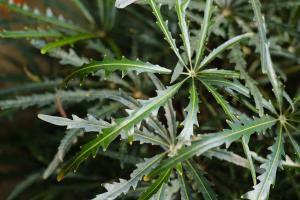What is Tomato Plant Blight?
Tomato plant blight is a disease that affects tomato plants, causing significant damage to crops. It is caused by several species of fungi that live in soil and can persist there for years, infecting tomato plants whenever they are susceptible.
Types of Tomato Plant Blight
There are two major types of tomato plant blight: early blight and late blight. Early blight, caused by the fungus Alternaria solani, typically occurs during late spring or early summer in warm and humid conditions. Late blight, caused by the fungus Phytophthora infestans, appears later in the season when temperatures are cooler and the humidity is higher.
Signs and Symptoms of Tomato Plant Blight
The early signs of tomato plant blight are yellowing of the leaves near the base of the plant, followed by the appearance of brown or black spots on the leaves. These spots eventually spread, causing the leaves to die and fall off. In severe cases, the stems and fruits may also be affected, causing the fruits to rot and become unusable.
Preventing Tomato Plant Blight
The best way to prevent tomato plant blight is to practice good crop management. This includes rotating crops, planting in well-drained soil, and ensuring that plants receive adequate sunlight and air circulation. Watering should be done early in the day to allow leaves to dry before the cooler nighttime temperatures set in. Fertilizing and pruning should also be done with care to avoid injuring the plants and creating entry points for pathogens.
Treating Tomato Plant Blight
If tomato plants are affected by blight, it is important to remove infected parts of the plant immediately to prevent the disease from spreading. Fungicides containing copper or other active ingredients may also be used, but they should be used as a last resort and in combination with other preventative measures. If the disease is severe, it may be necessary to remove the entire plant and start anew.
Conclusion
Tomato plant blight can be a serious threat to tomato crops, but with proper management and preventative measures, it is possible to minimize its impact. By paying close attention to the signs and symptoms of the disease, and taking prompt action to treat it, growers can protect their plants and ensure a bountiful harvest.

 how many times do yo...
how many times do yo... how many planted tre...
how many planted tre... how many pine trees ...
how many pine trees ... how many pecan trees...
how many pecan trees... how many plants comp...
how many plants comp... how many plants can ...
how many plants can ... how many plants and ...
how many plants and ... how many pepper plan...
how many pepper plan...




























